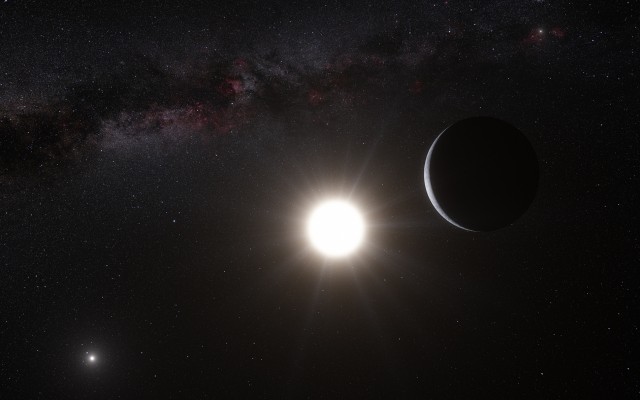Exoplanet found right next door in Alpha Centauri
Ars Technica » Scientific Method 2012-10-23

Today, planet hunters announced evidence that there's a planet orbiting one of our closest stellar neighbors. One of the three stars of the α Centauri star system shows the sort of periodic changes in brightness that are a hallmark of the presence of an orbiting planet. And, even though the new world would be far too hot to support liquid water, the astronomers who discovered it point out small planets tend to form in groups. Odds are good that there are additional planets lurking further out from the host star.
Rapid advances in planet-hunting have led to an ever-increasing catalog of exoplanets, but most of these orbit distant stars. In contrast, the a Centauri system "is a household name," as Greg Laughlin of UC Santa Cruz put it. Just over four light years from Earth, the system includes two bright stars, Centauri A and B orbiting each other with an 80 year period, along with a red dwarf called Proxima Centauri. Centauri B has a Sun-like mass, but is quite a bit dimmer.
The planet was detected using the radial velocity method. As a massive body orbits its host star, it exerts a gravitational pull on it, pulling the star in slightly different directions as its position shifts. These create a small acceleration in the star itself, usually on the order of a few meters per second2. That, in turn, shows up in the light emitted by the star as Doppler shifts in the light it emits, which vary with the orbital period of the planet.
Read 9 remaining paragraphs | Comments